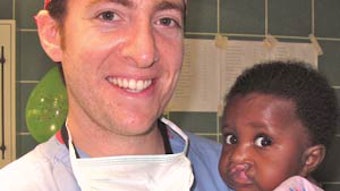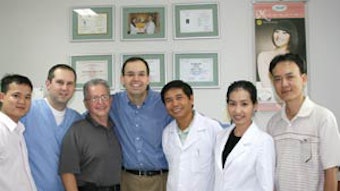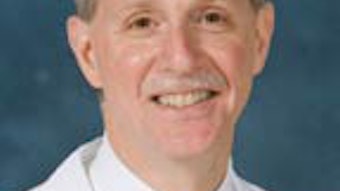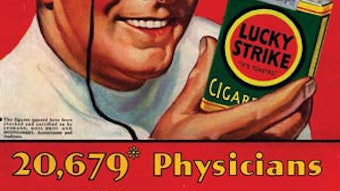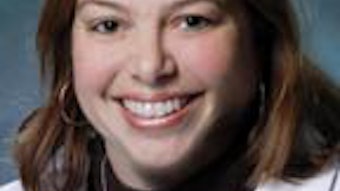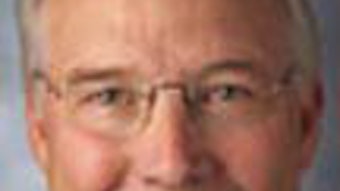The Power of Intention
David R. Nielsen, MD, AAO-HNS/F EVP/CEO Almost all of us have had the experience of asking, “Why?” only to hear, “Because that’s the way we always do it!” or, “Because I said so!” As surgeons we are trained to dislike unwanted variation. We would prefer to have our own operating room team, not a new scrub tech, charge nurse, and anesthesiologist every time we operate. We get our best results when we establish best practices and stick to them. But as we grow, improve, and change we must balance the desire for “sameness” with the need to critically evaluate what we do, and institute improvements when needed. Much of our technology, advanced techniques, and new knowledge come from a direct and systematic approach in search of improvement. When we appropriately question what we do and how we do it, and make genuine curiosity an integral part of our professional and personal development, we not only find answers along the path, but we often stumble across positive, unexpected, and serendipitous discoveries. Our world is filled with examples ranging from Post-it® notes to Penicillin; or from Columbus’ discovery of America to Rosen’s discovery of stapes mobilization. The very word, “serendipity,” has a fascinating origin. It is ascribed to Horace Walpole in 1754 and based on a 16th century Persian fable called “The Three Princes of Serendip” (http://livingheritage.org/three_princes.htm). As the story goes, long ago in the country of Serendippo there lived a great and powerful king with three sons. His doubts about their fitness for succeeding him lead him to send them abroad for experience. The fable relates how these three sagacious sons trace clues to identify precisely a camel they have never seen. When they later encounter the merchant who has lost the camel, he accuses them of stealing it. When asked how they are able to give such an accurate description of the camel if they have never seen it, it becomes clear that they have cleverly used small clues to discover the nature of the camel. The missing camel is found wandering in the desert, and the Three Princes are given rich rewards. The princes continue to display their powers of observation and wisdom, and it has a happy ending. You should read the story! According to Walpole, the process of serendipity was that “…They were always making discoveries, by accident and sagacity, of things they were not in quest of.” Another point of the story is to highlight the wisdom of the king, the father of the princes, who knew that in order for his sons to grow and learn, they needed to be put in a position to use their knowledge in new ways, explore new territory, and meet new people. We use the word differently today to imply chance or fate, but its original meaning was their discovery of things they were not in search of by systematically using their own wisdom and knowledge. We as highly educated scientists and physicians should understand the critical need to be constantly using our sagacity and knowledge to examine, explore, and search. Each of us can indubitably relate an experience where we discovered something positive that we were not expecting, because we were searching, inquiring, and curious. The challenge for us is to be continuously and intentionally evaluating what we do and why we do it. In the past few years we have experienced some very positive changes to our volunteer membership structure and staff in Research and Quality, Education, Health Policy, Bulletin, journal, and development activity. You will see some additional recommended improvements for the Academy in the coming year. While these changes have brought expected results, there have been many positive, unexpected benefits in member engagement, satisfaction, sustainability, and unity. Your dedicated staff at 1650 Diagonal Road in Alexandria has adopted the attitude that we will be more evidence-based and data-driven in our decisions and work on your behalf. When the question arises about why we do things a certain way we no longer just say, “Because that’s the way it’s always been done.” We examine the rationale behind our policies, governance, structure, and business practices to ensure that what we do and why we do it still makes sense. There is nothing wrong with doing things traditionally, or staying with tried and true methods and policies. But we should do them because we have considered the alternatives, examined the options, and can confirm that the traditional policy is superior. We should not adopt the usual methods just because we are too lazy, fearful, or busy to consider improving. We applaud you, our valued members and colleagues, for your continued creativity and inventiveness, and we join you with assurance that our intentional pursuit of excellence will be rewarded.
David R. Nielsen, MD, AAO-HNS/F EVP/CEO
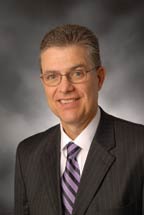 David R. Nielsen, MD, AAO-HNS/F EVP/CEO
David R. Nielsen, MD, AAO-HNS/F EVP/CEOAlmost all of us have had the experience of asking, “Why?” only to hear, “Because that’s the way we always do it!” or, “Because I said so!” As surgeons we are trained to dislike unwanted variation. We would prefer to have our own operating room team, not a new scrub tech, charge nurse, and anesthesiologist every time we operate. We get our best results when we establish best practices and stick to them.
But as we grow, improve, and change we must balance the desire for “sameness” with the need to critically evaluate what we do, and institute improvements when needed. Much of our technology, advanced techniques, and new knowledge come from a direct and systematic approach in search of improvement. When we appropriately question what we do and how we do it, and make genuine curiosity an integral part of our professional and personal development, we not only find answers along the path, but we often stumble across positive, unexpected, and serendipitous discoveries. Our world is filled with examples ranging from Post-it® notes to Penicillin; or from Columbus’ discovery of America to Rosen’s discovery of stapes mobilization.
The very word, “serendipity,” has a fascinating origin. It is ascribed to Horace Walpole in 1754 and based on a 16th century Persian fable called “The Three Princes of Serendip” (http://livingheritage.org/three_princes.htm). As the story goes, long ago in the country of Serendippo there lived a great and powerful king with three sons. His doubts about their fitness for succeeding him lead him to send them abroad for experience. The fable relates how these three sagacious sons trace clues to identify precisely a camel they have never seen. When they later encounter the merchant who has lost the camel, he accuses them of stealing it. When asked how they are able to give such an accurate description of the camel if they have never seen it, it becomes clear that they have cleverly used small clues to discover the nature of the camel. The missing camel is found wandering in the desert, and the Three Princes are given rich rewards. The princes continue to display their powers of observation and wisdom, and it has a happy ending. You should read the story!
According to Walpole, the process of serendipity was that “…They were always making discoveries, by accident and sagacity, of things they were not in quest of.” Another point of the story is to highlight the wisdom of the king, the father of the princes, who knew that in order for his sons to grow and learn, they needed to be put in a position to use their knowledge in new ways, explore new territory, and meet new people. We use the word differently today to imply chance or fate, but its original meaning was their discovery of things they were not in search of by systematically using their own wisdom and knowledge.
We as highly educated scientists and physicians should understand the critical need to be constantly using our sagacity and knowledge to examine, explore, and search. Each of us can indubitably relate an experience where we discovered something positive that we were not expecting, because we were searching, inquiring, and curious. The challenge for us is to be continuously and intentionally evaluating what we do and why we do it.
In the past few years we have experienced some very positive changes to our volunteer membership structure and staff in Research and Quality, Education, Health Policy, Bulletin, journal, and development activity. You will see some additional recommended improvements for the Academy in the coming year. While these changes have brought expected results, there have been many positive, unexpected benefits in member engagement, satisfaction, sustainability, and unity.
Your dedicated staff at 1650 Diagonal Road in Alexandria has adopted the attitude that we will be more evidence-based and data-driven in our decisions and work on your behalf. When the question arises about why we do things a certain way we no longer just say, “Because that’s the way it’s always been done.” We examine the rationale behind our policies, governance, structure, and business practices to ensure that what we do and why we do it still makes sense. There is nothing wrong with doing things traditionally, or staying with tried and true methods and policies. But we should do them because we have considered the alternatives, examined the options, and can confirm that the traditional policy is superior. We should not adopt the usual methods just because we are too lazy, fearful, or busy to consider improving. We applaud you, our valued members and colleagues, for your continued creativity and inventiveness, and we join you with assurance that our intentional pursuit of excellence will be rewarded.
